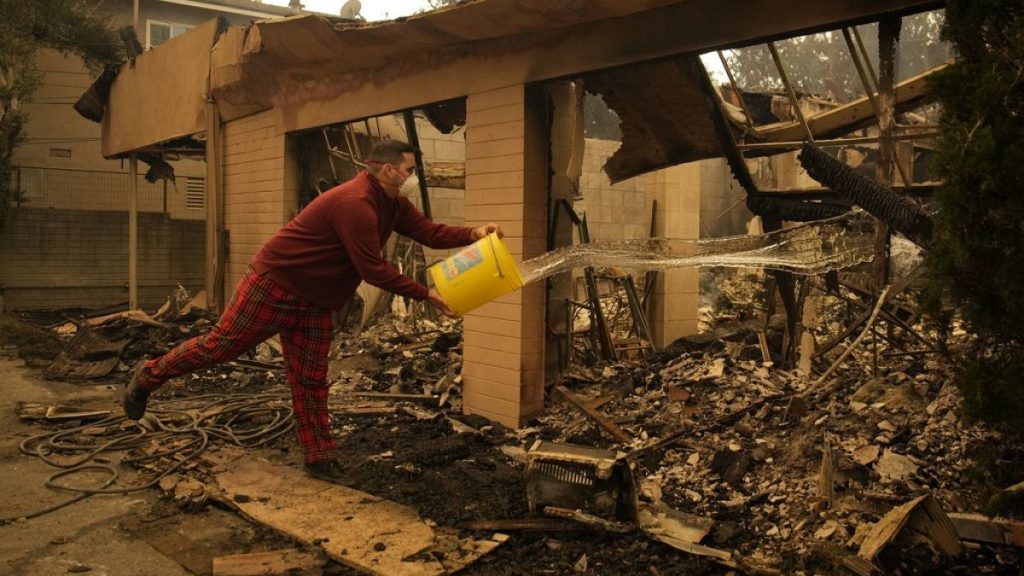The devastating wildfires that swept through Malibu and surrounding areas of Los Angeles County in late 2025 left a trail of destruction, consuming homes, businesses, and critical infrastructure. The ferocity of the blaze, fueled by dry conditions and strong winds, overwhelmed firefighting efforts, leaving communities reeling from the extensive damage. While the full extent of the devastation was still being assessed at the time of the initial report on October 1, 2025, early estimates pointed towards a staggering loss. Authorities indicated that between 4,000 and 5,000 structures, including vehicles, were consumed in the Eaton fire alone, which raged near Pasadena. This highlights the immense scale of the disaster and the widespread impact it had on the region. The coastal city of Malibu bore the brunt of the inferno, with numerous homes and crucial infrastructure reduced to ashes.
The fires, ripping through dry vegetation, engulfed vast swathes of land, leaving behind a charred landscape. The intensity of the blaze created an apocalyptic scene, with flames leaping across roads and engulfing properties in their path. The rapid spread of the fire forced many residents to flee their homes with little more than the clothes on their backs, leaving behind cherished possessions and memories. The devastation extended beyond residential areas, impacting vital infrastructure including power lines, communication networks, and transportation routes. The disruption to these essential services further compounded the challenges faced by residents and emergency responders alike. The scale of the disaster underscored the vulnerability of communities to increasingly frequent and intense wildfires, exacerbated by climate change and human activities.
The immediate aftermath of the fires was marked by chaos and uncertainty as residents grappled with the loss of their homes and livelihoods. Emergency shelters were set up to provide temporary accommodation for displaced individuals and families, while relief organizations mobilized to offer essential supplies, food, and medical assistance. The arduous task of assessing the full extent of the damage and accounting for missing individuals began amidst the smoky haze and smoldering debris. The fires left an indelible mark on the landscape and the psyche of the affected communities, raising urgent questions about fire prevention strategies, building codes, and the need for greater resilience in the face of climate change-induced disasters.
As the flames subsided and the smoke began to clear, the focus shifted towards recovery and rebuilding. The government, along with local and international aid organizations, pledged support for the affected communities. However, the lack of specific details on the number of structures destroyed and the financial cost of the damage at the time of the initial report highlighted the challenges in accurately assessing the scale of the disaster and formulating an effective recovery plan. The destruction of critical infrastructure further complicated the recovery process, hindering access to essential services and impeding the efforts of emergency responders and aid workers. The arduous task of rebuilding homes, businesses, and infrastructure was expected to take years, requiring significant financial investment and collaborative efforts from government agencies, private organizations, and the affected communities.
The 2025 Malibu wildfires served as a stark reminder of the increasing threat of wildfires in a changing climate. The combination of prolonged drought, rising temperatures, and strong winds created a tinderbox-like environment that fueled the rapid spread of the flames. The extent of the destruction underscored the urgent need for proactive measures to mitigate the risk of future wildfires, including improved forest management practices, stricter building codes in fire-prone areas, and enhanced early warning systems. The disaster also highlighted the importance of community preparedness and the need for residents to have evacuation plans in place and to be aware of the risks associated with living in wildfire-prone areas. The lessons learned from the 2025 Malibu fires would be crucial in shaping future fire prevention and disaster management strategies.
The recovery from the wildfires would be a long and challenging process, requiring not only financial resources but also resilience, community spirit, and a commitment to building a more sustainable and fire-resilient future. The emotional scars left by the disaster would likely linger for years to come, as residents struggled to rebuild their lives and cope with the losses they had suffered. The fires served as a wake-up call, highlighting the interconnectedness of human activities, climate change, and the increasing frequency and intensity of natural disasters. The rebuilding efforts would need to address not only the immediate needs of the affected communities but also the underlying factors that contributed to the disaster, ensuring that future generations are better equipped to face the challenges of a changing climate.














